North Korea's Polaris: Gorae Class ballistic missile submarine (SINPO Class)
 Thank you to unnamed advisers. This work would not have been possible without substantial inputs from experts. Any errors or incorrect assumptions are purely the responsibility of the author however
Thank you to unnamed advisers. This work would not have been possible without substantial inputs from experts. Any errors or incorrect assumptions are purely the responsibility of the author however
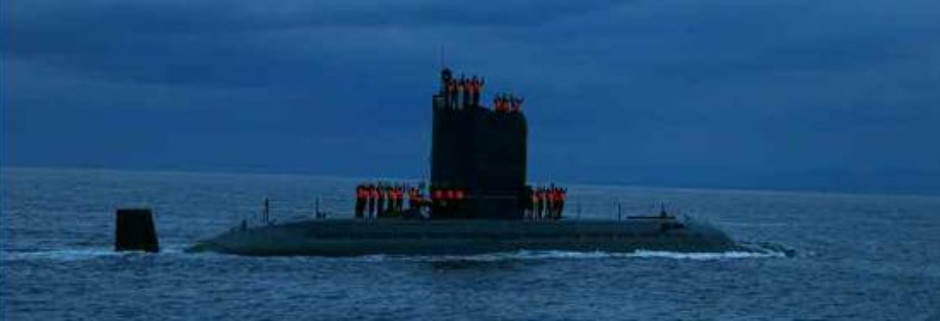

 A lot of things have changed since I first discovered the Gorae Class ballistic missile submarine (aka SINPO Class) in Google Earth imagery in October 2014. At the time, North Korea’s submarine launched ballistic missile (SLBM) program was only a rumor on the peripherals of the defense analysis community. Armed with these rumors the discovery of the submarine was not entirely a surprise, but it was an undeclared type as far as North Korea was concerned. Its existence had been kept a well-guarded secret. Perhaps under the previous ‘dear leader’ the project would have remained obscure, but in the new mood of bravado the type has been thrust into the limelight by the North Korean regime themselves. Along the way there have been plenty of questions about capabilities and some incredulity among observers. But with the latest August 2016 test launch been deemed successful it is now taken very seriously. As I have done all the long. This article tries to keep pace with developments and look behind the headlines at what it means in terms of capability ...
A lot of things have changed since I first discovered the Gorae Class ballistic missile submarine (aka SINPO Class) in Google Earth imagery in October 2014. At the time, North Korea’s submarine launched ballistic missile (SLBM) program was only a rumor on the peripherals of the defense analysis community. Armed with these rumors the discovery of the submarine was not entirely a surprise, but it was an undeclared type as far as North Korea was concerned. Its existence had been kept a well-guarded secret. Perhaps under the previous ‘dear leader’ the project would have remained obscure, but in the new mood of bravado the type has been thrust into the limelight by the North Korean regime themselves. Along the way there have been plenty of questions about capabilities and some incredulity among observers. But with the latest August 2016 test launch been deemed successful it is now taken very seriously. As I have done all the long. This article tries to keep pace with developments and look behind the headlines at what it means in terms of capability ...
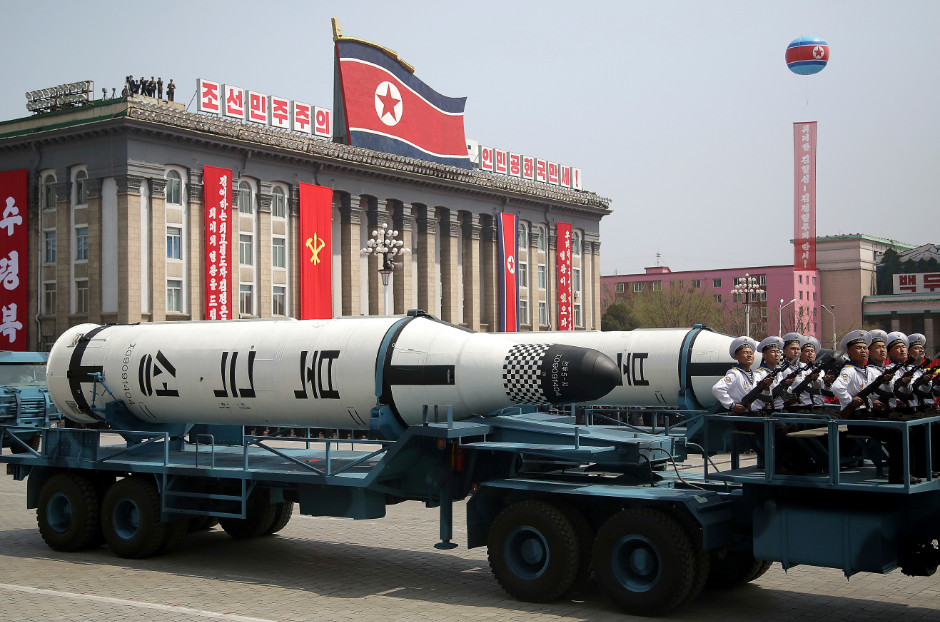
Pukgeukseong-1 (NK-11) submarine launched ballistic missiles being paraded through Pyongyang, 15th April 2017. Image from www.taiwannews.com.tw
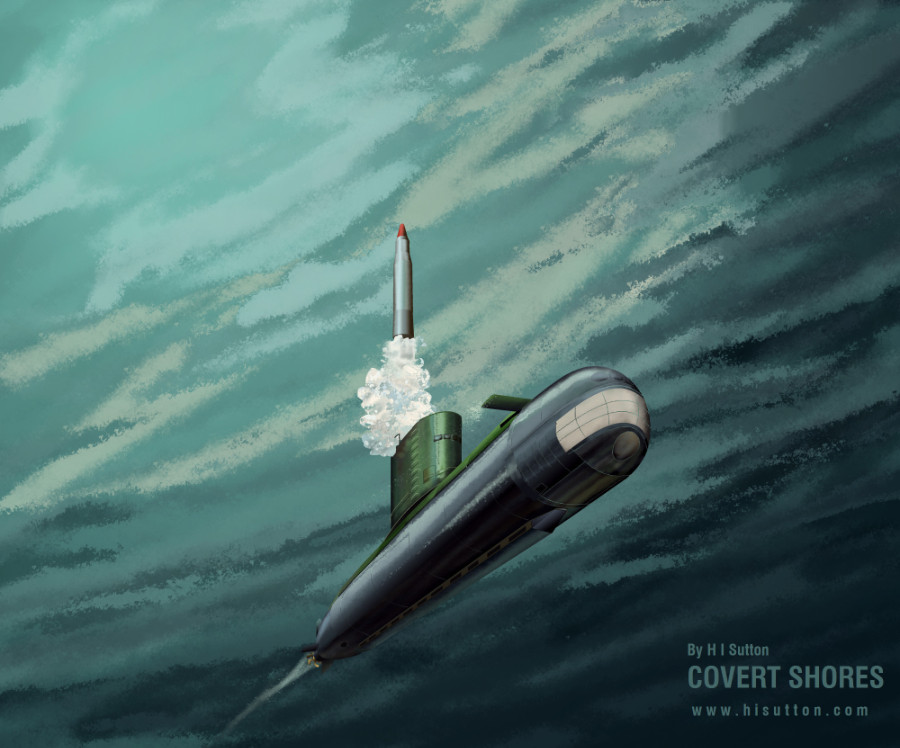
Original artwork in Cold War DIA (Defense Intelligence Agency) style - CLICK for HIGH-RESOLUTION image.
Key points
(On the balance of probabilities...)
- This submarine is a conventionally powered ballistic missile submarine (SSB) designed to deliver nuclear weapons
- The first KN-11 “북극성-1” (Pukgeukseong-1) missile test using a cold-launch system. The rocket may not have ignited. North Korean images were doctored to show a rocket plume but this was from a liquid fueled rocket.
- The original KN-11 “북극성-1” (Pukgeukseong-1) missile is a direct reverse-engineered copy of the Soviet R-27 missile
- A more recent (April 2016) KN-11 “북극성-1” (Pukgeukseong-1) missile test appeared to show a solid fueled missile however (consensus view ). This is likely to be shorter ranged.
- For the time being the submarine should be regarded as a test platform with limited operational capability
- Relative to other ballistic missile submarines the Sinpo Class will be shorter ranged and stay on station for shorter periods of time
- However, it can hide in littoral waters and potentially bottom-out on the seabed with minimal systems running for added stealth. Missile support systems would have to be on however.
- North Korean submarine technology is crude but their submarines are aggressively employed and have proven to be a credible threat
- The West Coast of US is not yet within operational range but this is a key stepping stone towards that type of capability. Guam and other regional targets remain at risk.

Original artwork - CLICK for HIGH-RESOLUTION image.
Nuclear armed ballistic missile submarines are an exclusive club. Only US, UK, France, Russia, China and India have them. Now North Korea is poised to join the club, bringing more distant targets within range. While North Korea's first 'Boomer' is not technologically comparable to the other classes it is a game changer in the strategic sense. I am cautious to suggest that it will be conducting deterrence patrols off the West Coast of US any time soon, but it does present a launch platform which is not restricted to Korea's confined landmass. And whatever the submarine's sea-keeping and endurance relative to proper SSBNs, regional targets such as Japan, Guam and even Hawaii get a bit closer.
THE book on Special Forces subs Covert Shores 2nd Edition. A world history of naval Special Forces, their missions and their specialist vehicles. SEALs, SBS, COMSUBIN, Sh-13, Spetsnaz, Kampfschwimmers, Commando Hubert, 4RR and many more.
Check it out on Amazon
Description
The submarine has one launch silo mounted in the sail. This configuration is similar to the Russian GOLF and HOTEL Class submarines. This may be no coincidence as North Korea received a number of GOLF Class hulls as scrap in the 1990s. It also allows the submarine's hull to be much smaller which is a sensible consideration for a desperately poor country, and even more so if the design is only intended as test platform or limited operating capability.
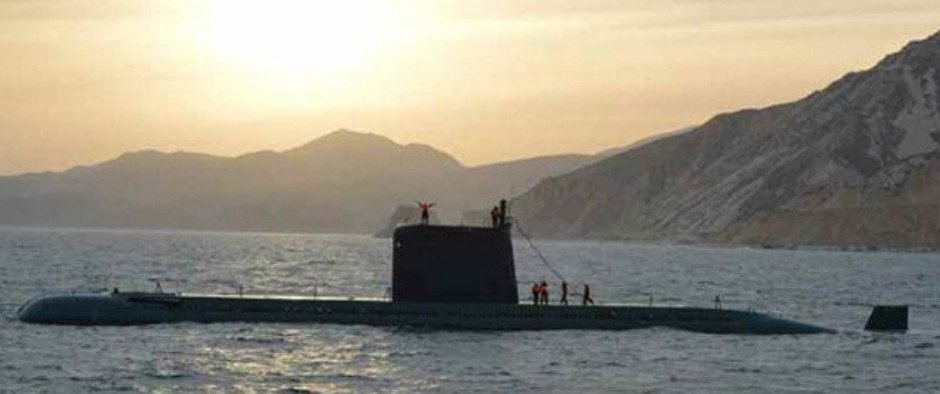
The submarine has single-hull construction and appears close in overall hull-form to the indigenous MS-29 Yono. However, being much larger it probably has three decks of just over 2m each. The bow is likely to contain a relatively modest circular sonar array like other North Korean boats, with the forward ballast tank directly behind it. Two or four torpedo tubes are likely carried above it (there could easily be up to ten in a boat this size but this is very unlikely given the need to conserve weight for the main missile). Behind the torpedo room would be the control room with access hatch in the forward portion of the sail. In the center of the sail, behind the control room, a single missile tube points skyward. The missile itself does not extend the whole length of the tube, but requires a compressed air launch system and compensation tanks (to take in extra seawater to balance the boat after the missile is fired). The second half of the boat is likely to be dominated by engines and machinery. There is no indication of Air Independent Power (AIP) being fitted. A large number of heavy duty lead-acid batteries are probably carried on the lowest deck. Crew space would be distributed around the above features, mostly in the forward half of the boat.

This press image reveals that the Gorea Class submarine has a crew of around 70-80 men:
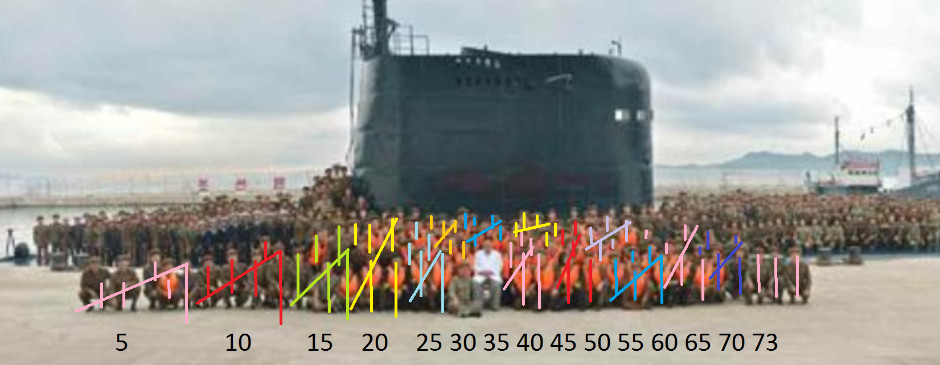
Any suggestion that the Sinpo Class SSB is based on the Soviet GOLF, ZULU, ROMEO or KILO Class are plainly mistaken, as are recurring suggestions that North Korean submarines are based on Yugoslavian Heroj or Sava classes. They just aren't.
Gorae Class SSB Specifications (Provisional)
Displacement: 1,455 tons (surfaced), 1,650 tons (submerged)
Length: 68m
Waterline length: 65m
Beam: 6.5m
Speed: <20kts
Range: TBC
Endurance: Approximately 1 month or less
Operating depth: TBC
Propulsion: Diesel-electric
Armament: 1 x NK-11 “북극성-1” (Pukgeukseong-1) SLBMs, possible 2-4 torpedo tubes

Gorae SSB / NK-11 timeline
The existence of the North Korean ballistic missile submarine was first revealed on this website on 17th October 2014 (days before other sites). It has since been labelled the "Sinpo Class" after the town where the secret shipyard is located.
- 9th October 2006: First North Korean nuclear test at Punggye-ri Test Site
- Between 15th August 2008 and 27th November 2012: Missile test stand constructed at Sinpo near to submarine boatyard. Presence not reported until after the Gorae submarine is spotted in 2014. This test stand is consistent with submarine launched missiles.
- 25th May 2009: Second North Korean nuclear test at Punggye-ri Test Site
- 12th February 2013: Third North Korean nuclear test at Punggye-ri Test Site
- 30th April 2014: satellite imagery shows significant work on missile test stand at Sinpo.
- 17th Oct 2014: Existence of Gorae Class SSB revealed on Covert Shores, having been found on Google Earth with satellite imagery dated 24th July 2014. Also noted is that roof of main submarine construction hall has been removed.
- Prior to 18th December 2014: Submarine is joined by missile submerged-launch test barge at Sinpo
- 28th February 2015: Satellite imagery shows re-roofing of submarine hall at Sinpo complete. Work on launch ramp extension still ongoing (finished by May 2016)
- 9th May 2015: First at-sea test-launch of the NK-11 SLBM from the test barge.
- 27th October 2015: Second period of activity at missile test stand in Sinpo
- 28th November 2015: Second test launch of NK-11 SLBM, possibly from Gorae Class SSB. Clear failure.
- 21st December 2015: Third test launch of NK-11 SLBM, reportedly from the Gorae Class SSB. Reported as success.
- 6th January 2016: Forth North Korean nuclear test at Punggye-ri Test Site
- 23rd April 2016: Forth test launch of NK-11 SLBM, reportedly from the Gorae Class SSB. Reported as a failure.
- 9th July 2016: Fifth test launch of NK-11 SLBM, reportedly from the Gorae Class SSB. Reported as a failure.
- 24th August 2016: Sixth test launch of NK-11 SLBM is deemed successful by both regime and analysts. The missile flew in a lofty trajectory and travelled 500km (300 miles) into the Sea of Japan. Military sources suggest that this translates into a 1,000km (600 mile) range in an operational setting.
- 9th September 2016: Fifth nuclear test.
Capability / Threat
The Sinpo Class is a small boat. It seems that she is built to the requirement of being the smallest possible boat to carry a NK-11 “북극성-1” (Pukgeukseong-1) missile. This reinforces the view that she is only a test boat with limited operational capability at most. Battery and crew provisions would be sorely limited giving an endurance of less than a month. Speed would be quite slow, especially in an operational setting. Although we can expect the boat to remain local, acting as a mobile TEL with her ballistic missiles targeting Japan and South Korea, we should at least ask the question of whether this boat could, in extreme circumstance, threaten countries much further afield. Using a possible ten-day voyage to the launch site and a mean rate of advance of 10kts (which is optimistic and can be considered a parameter) we find that the Sinpo Class can Just about reach a launch position off Hawaii. It's a close call. Darwin in Australia is closer, and most f South East Asia is well within possibilities.
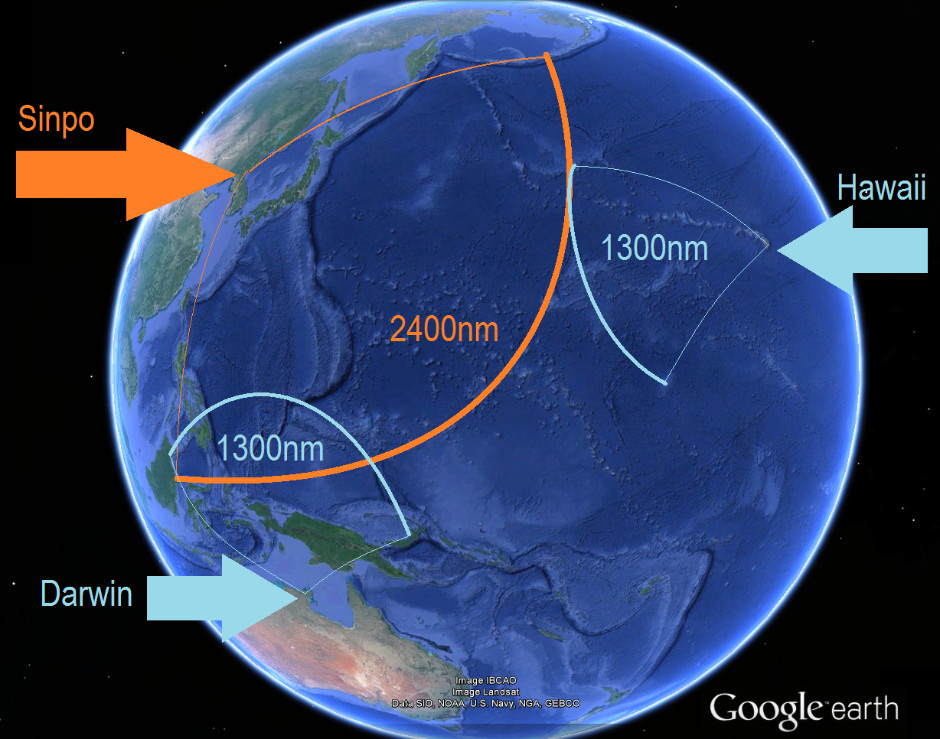
Map drawn before newer solid fuel missile was tested. Revised estimate of missile range reduced to about 540nm (1,000km).
The photos of the sub and first test launch from submerged barge...

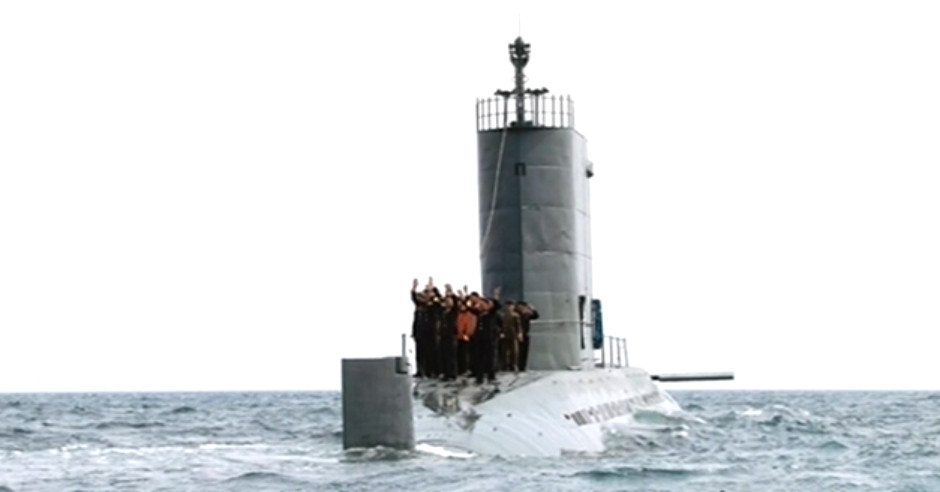
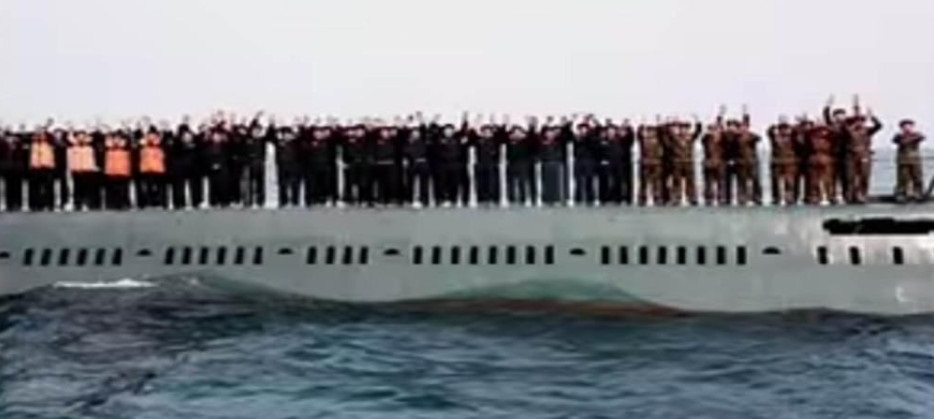
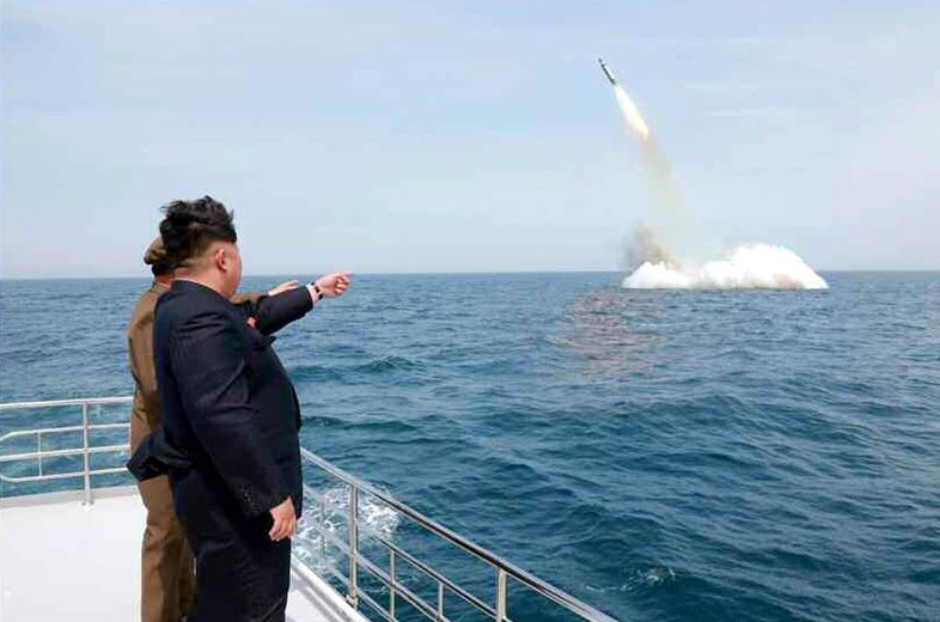
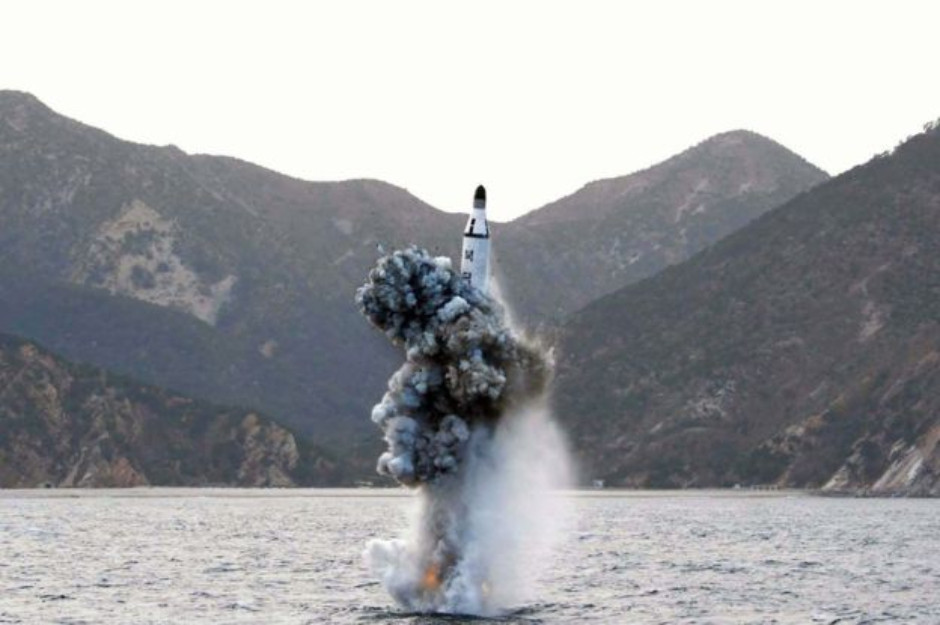
NK-11 “북극성-1” (Pukgeukseong-1 = 'North Star-1' = 'Polaris-1') Submarine launched Ballistic Missile (SLBM)
Length: 9.3m
Diameter: 1.5m
Weight: 14 metric tons
Warhead: Single nuclear weapon
Propulsion: Solid fueled rocket
Launch: Submerged, ignited (not ejected)
Range: TBC
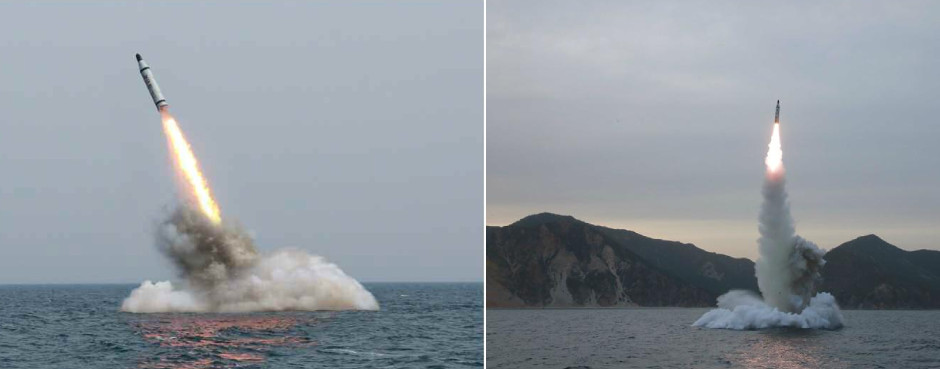
The first missile test (left) appears to show a liquid fueled missile. However this images is believed to have been doctored with a fake plume. The April 2016 launch (right) shows the solid fueled rocket motor. The missile tube cap shown in TV coverage is also consistent with a solid fueled missile.
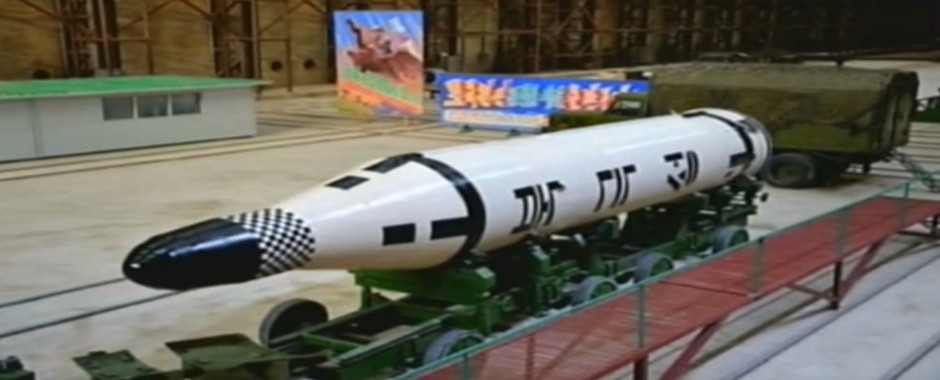
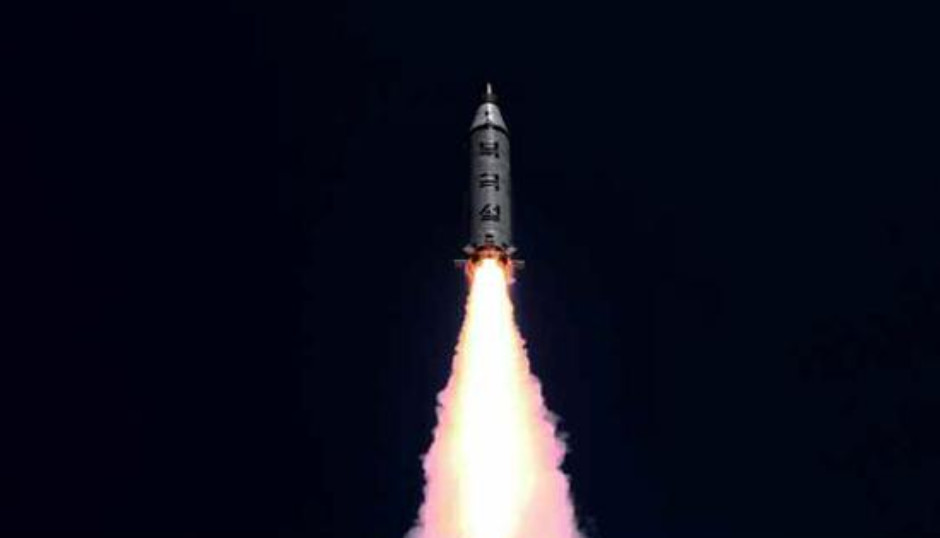
These images from the August 2016 test launch reveal the lattice control surfaces, similar to several other North Korean missiles.
Satellite Imagery
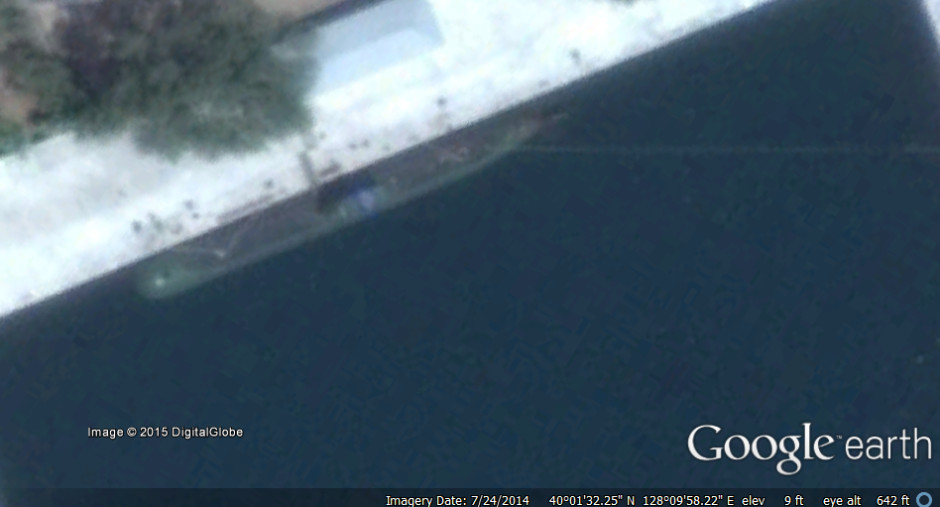
The new submarine first appeared outside the shipyard at Sinpo between 30th April 2014 (when it was bot present in imagery) and 24th July 2014. The July imagery was not available on Google earth until later in the year. The new type was 65m (213ft) long and had a beam of ~6.5m (21ft), making it much larger than the existing Sang-O (Shark) and Yono Class submarines. The location was in fact associated with the manufacturer of the Sang-O Class small attack submarines and in particular with the enlarged 40m version. Initial assessment by this website (credit to unnamed individuals who assisted in the analysis) pointed to a ballistic missile submarine.
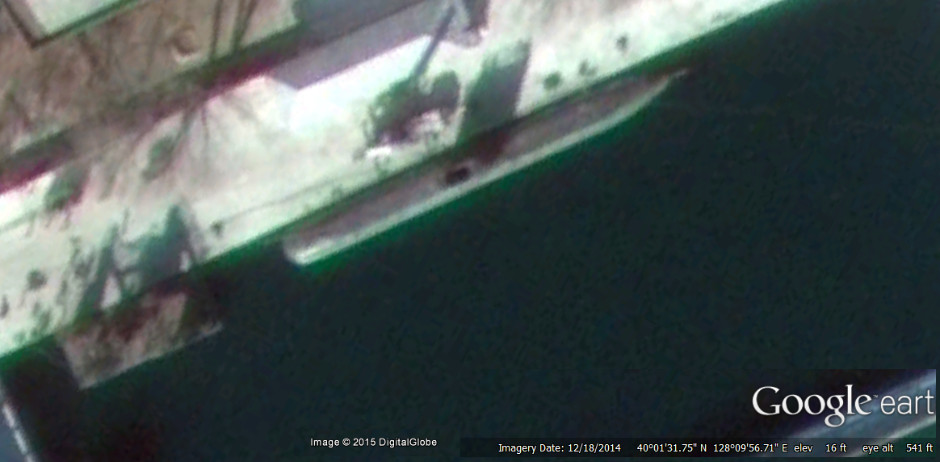
In imagery from 18th December 2014 a raft is visible moored in front of the submarine. This is consistent with rafts used to test launch ballistic missiles from underwater before it is attempted from a crewed submarine. The layout of the raft is remarkably similar to those used by Russia. Together with a rocket engine test stand near the site this strongly reinforces the hypothesis that this submarine is a ballistic missile boat. The Raft was still present in the latest imagery available taken on a 2nd March 2015 overpass:
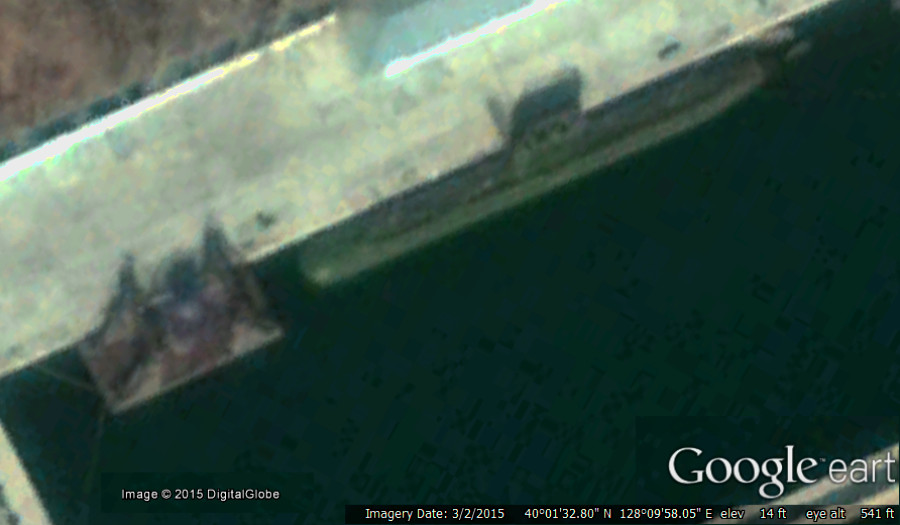
We can now see what appears to be twin missile silo holes in the sail, resembling a Derringer 1866 pistol. This was mistaken and it is now confirmed that the boat only has one missile tube.
The missile test raft
The raft is a platform that can be anchored and sunk to a set depth. It can then be monitored remotely while the missile is launched from a vertical launch tube mounted centrally. We do not have close-up images of the North Korean Raft but it is remarkably similar to the ones used by the Soviet Union during the 1960s. According to defense sources the KN-11 missile was successfully tested from this raft in Jan 2015.
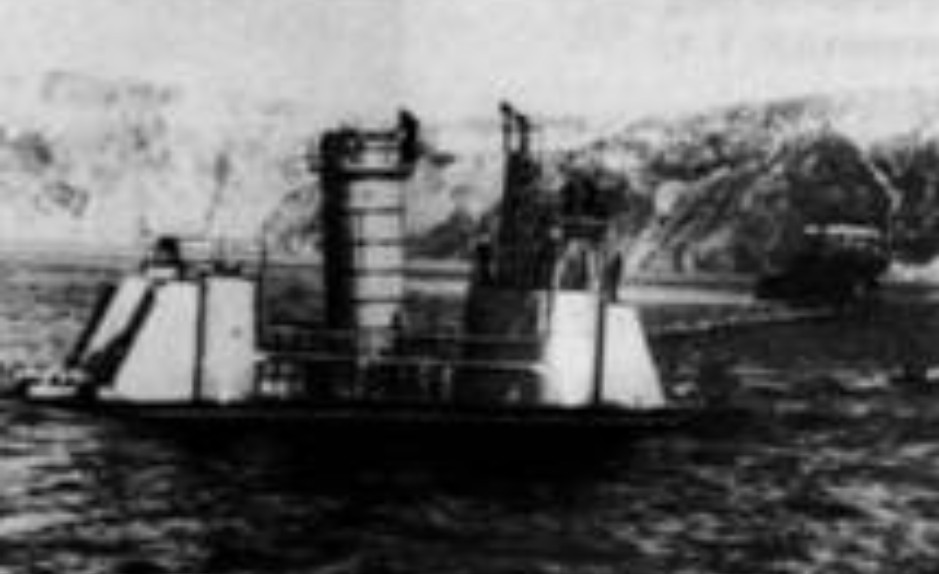
Submersible Stand PSD-4, Black Sea, 1961. Source: Russian website
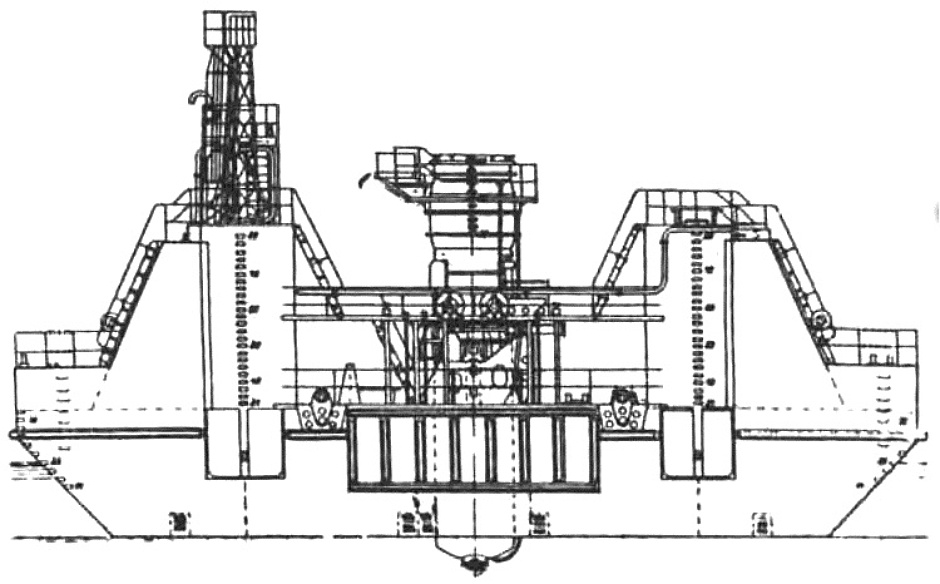
Submersible Stand PSD-7. Source: Russian website
Media myths and mistakes
Warning: Inevitably he videos being used by news agencies include a mix of footage from different submarine classes and missile tests. In particular the Gorae Class boat should not be mistaken for the Sang-O 2 (40 meter variant) or ROMEO Classes. This is great footage but should not be confused with the new boat:
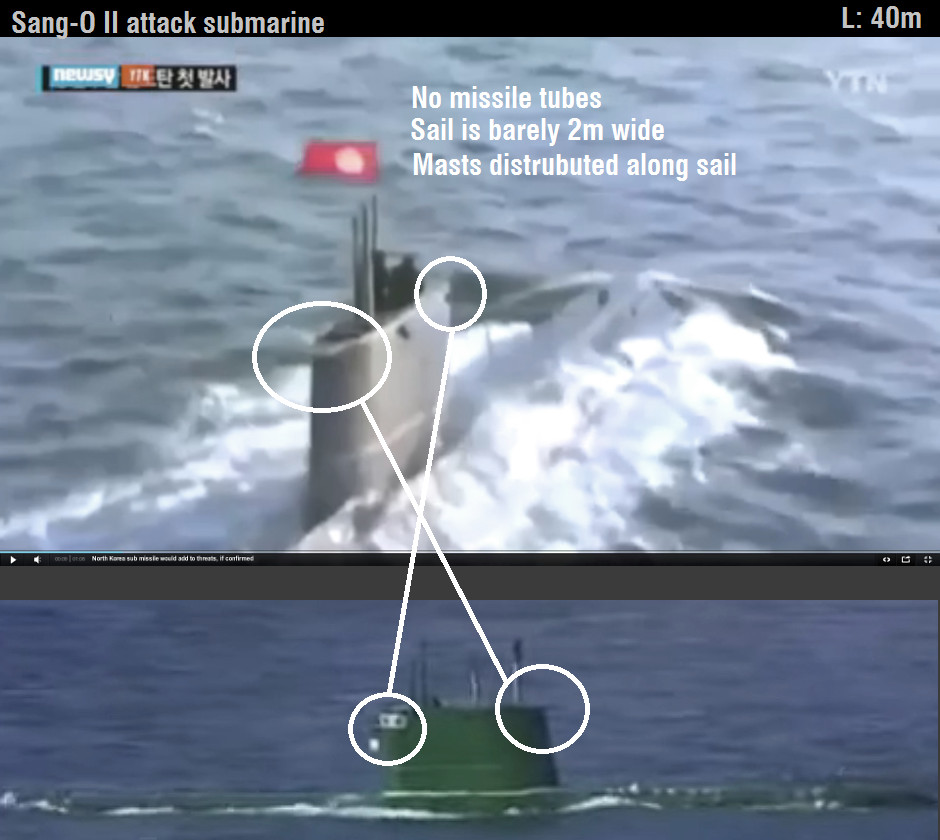
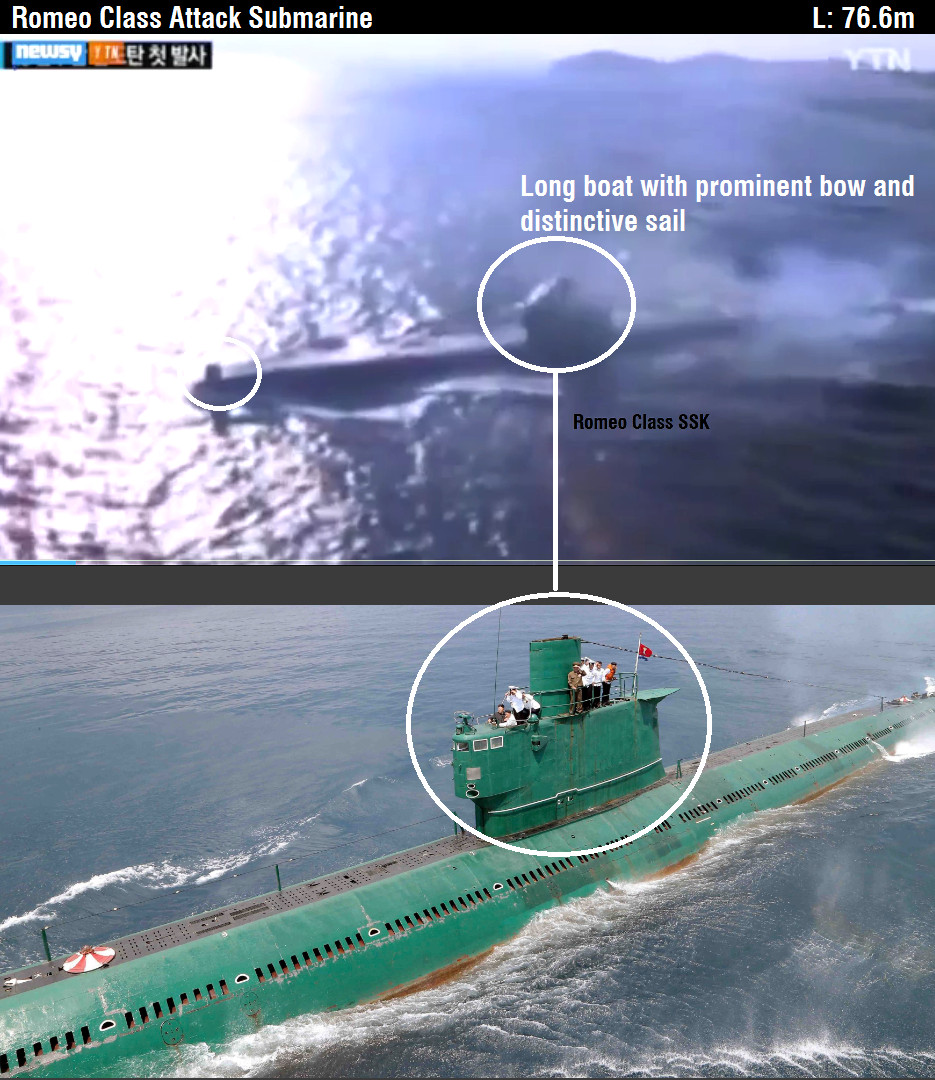
Similarly, the clips of missile launches often includes 'stock footage' from other countries' tests. These should be easier to spot.
Related Articles




 +
+ 


 Nuclear Missile submarines
Nuclear Missile submarines


 Taedong-B 'Kajami' ('Zulfikar') submersible boat
Taedong-B 'Kajami' ('Zulfikar') submersible boat

 infographic of North Korean MS-29 YONO Class midget sub
infographic of North Korean MS-29 YONO Class midget sub

 P.09851 KHABAROVSK and KANYON (Status-6)
P.09851 KHABAROVSK and KANYON (Status-6)

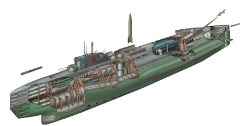 Stalin's Super Sub, Project P-2
Stalin's Super Sub, Project P-2

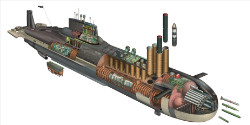 Russian Typhoon Class SSBN
Russian Typhoon Class SSBN

 INS Arihant, Indian SSBN and .2
INS Arihant, Indian SSBN and .2

 Iranian Fateh Class SSK
Iranian Fateh Class SSK


